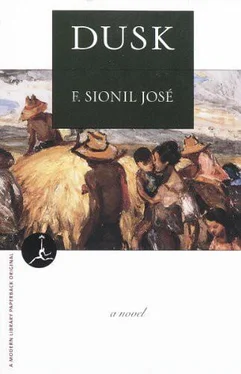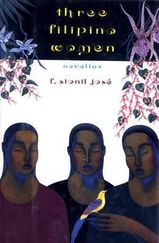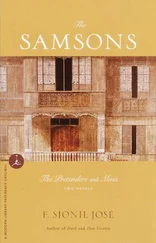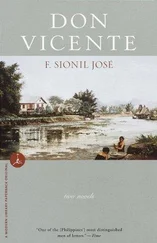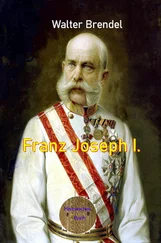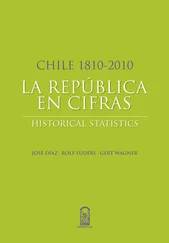They are coming now — more of them, down there below the gorge where they have left their horses; there are so many of them and there are so few of us. I am thirsty — sweat creeps down my back.
Why aren’t you coming up? Are you afraid?
Have we really stopped them? The president — he must be far away now with the time that we have bought for him. This is our gift not to him but to Filipinas. Honorable Cripple, I am not a patriot. But how do you measure the sacrifice this poor man beside me has made? He lies still, his hands no longer feel. He is so young, so very young — what had life promised to hold for him? Who is the woman he would have made happy, who would have borne his children? Honorable Cripple, you know the answers. And God — do I take Your name in vain? I don’t even know why I am here when I could have run away. It must be pride, or stubbornness, of which men of the north have plenty. If it is pride, what, then, can I be proud of? I have nothing to show, nothing which I have built by myself. Why then am I here? I will search the depths and will find nothing there. Nothing but
Duty,
Duty,
Duty.
MANILA
APRIL 30, 1900
Dear Jim ,
Thank you very much for your comments on my dispatch on the battle at Mount Tirad. It takes such a long time for my letters to get to you, and I cannot send messages by cable unless they are absolutely necessary. You must content yourself with letters, then .
I must tell you that I am not altogether happy about your decision to come here and teach school. I made this obvious, I hope, in my dispatches describing conditions here. But I will not try to dissuade you because I know your mind is made up and, certainly, you can do much in a territory like the Philippine Islands. In a sense, therefore, I am quite pleased that my brother has found a noble motive, to bring our civilization to this bleak corner of the world .
I just want to be sure that you know what is in store for you. Remember that Manila is not Boise, Idaho, and knowing of your adventurous spirit and your earlier desire to go to China, you will probably want to leave Manila for someplace in the mountains that is more interesting and challenging .
You have asked me to describe the Philippine Islands in some detail .
First, Manila. I must warn you that it is an Asiatic city, inconvenient and filthy. By steamer, you will go up the Pasig River, which empties into the bay. It is a very dirty river, with blobs of green water plants which have pretty purple blossoms. There are many native boats in the river; some are carved from whole trunks of trees, and cascos — boats with flat bottoms — which are pushed by the Tagalogs on the riverbanks. About these Tagalogs — they usually wear their shirts out, a custom which the Spaniards imposed on them to set them apart from us Occidentals, who always tuck in our shirts. You will disembark near the Puente de la España — or Bridge of Spain — a brick bridge which spans the river, then you will be taken to your hotel on a horse-drawn carriage with two wheels. For a more elegant ride, take the two-horse carriage .
The natives eat a lot of onions and garlic but the food — I have had a bit of it — is not as spicy as in India. You can feast on a variety of tropical fruits, and my favorite is the mango, which is tastier than our peach. And bananas and papayas — they are big and luscious. Keep away from pork, particularly outside Manila, for the pigs feed on human excrement. The water buffalo meat is tougher than beef, but it is certainly cleaner. Goat, chicken, and duck are also available .
At night, you will sleep in a giant four-poster bed with curtains, even. Sleep under a mosquito net — it is an absolute necessity. The mosquitoes are big and vicious and you may get malaria, which will give you constant fevers and chills. There will be no mattress on the bed but you will get used to the woven cane, which is also used for the seats of chairs .
Manila has a population of about one hundred fifty thousand, mostly natives. You will find many Chinese, Creoles, and a sprinkling of Europeans. Most of the Spaniards have left .
Almost all the Europeans — you can recognize them in the streets — wear white suits, as do the wealthy natives. The Chinese wear their own costume. It is really ridiculous seeing mestizos and natives suffering the heat attired in European suits with pointed leather shoes and, yes, black English derby hats. But the women dress sensibly, if elegantly, with blouses that seem to flower at the wrist, a folded kerchief around their necks, and billowy skirts which sometimes trail behind them. Their blouses are made from pineapple fiber and they are gauzy and very delicate. The women wear their hair long and they keep it glossy with coconut oil. It may not smell right, though, and you need not ask how I came to know .
There are very few big buildings here other than the churches, which are small compared to the churches of Europe. They have been constantly rebuilt, for this is also a land of earthquakes. The wooden houses are often roofed with tile. For windows they use seashells which permit light to filter in. The houses are really very airy. The lower portions are reserved for animals, carriages, and servants .
Yes, there are streetcars in Manila, but they are drawn by pathetic-looking little ponies. Escolta, the main shopping street, is stocked with all sorts of goods from the Continent. The Chinese shops are on a nearby street called Rosario .
Beyond this street, to the north, is a district called Tondo. The natives live here in tiny bamboo houses with palm-leaf roofs. The land is swampy and the whole place is foul; under the houses feces and rotting garbage collect in stagnant water. This is where the Katipunan — the secret society that ignited the revolution against Spain — was founded .
Intramuros — the old Walled City built in the sixteenth and seventeenth centuries — is surrounded by a moat fed by the Pasig River. It is an ugly and filthy moat spanned by eight bridges. The walls of Intramuros are thick — a squad can march on its ramparts. But the walls were never a defense against our naval artillery. There are many churches here, including the palace of the Archbishop. The streets are cobbled and the houses of stone are really old .
Beyond the Walled City is the Luneta — a promenade which is very popular, specially at dusk. There are a couple of bandstands and regular concerts are held .
In Manila, or anywhere in the Islands, I advise you to boil your drinking water else you will catch cholera or the pox. The latter is a horrible disease which scars the face with many small holes — I have seen this in children and in women who otherwise would be beautiful .
Manila has electricity, but it’s not very reliable, so always be ready with a match and candle .
The newspapers are all in Spanish, so you must learn the language if you want to reach the educated Filipinos. English must be taught here and I am glad that this will be one of your duties .
Transportation to the other islands is by boat and on the major island of Luzon where I am, you can go by train to Dagupan in the north. Otherwise, you go by carriage on poor and narrow roads. I would like to visit the south, where the Muhammadans are, and the mountains in the north inhabited by the head-hunting Igorots. There is gold up there .
You ask what the natives are really like. There are many tribes and dialects. In Manila are the Tagalogs; they are like most of the natives, a small people with black hair. They are very graceful, particularly the women. They have dark eyes and since there has been some intermarriage with the Chinese and Spaniards, there are many half-breeds. They are wily, passionate, irresponsible, and cannot be trusted. Our men say they steal anything they can lay their hands on .
Читать дальше
